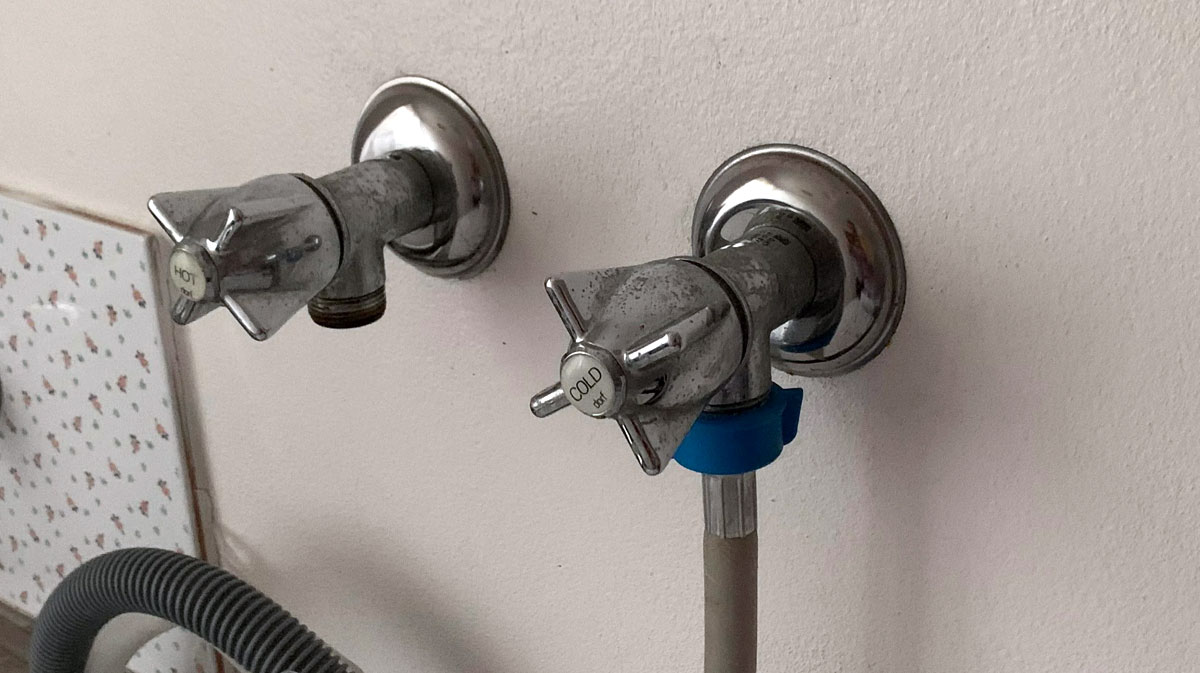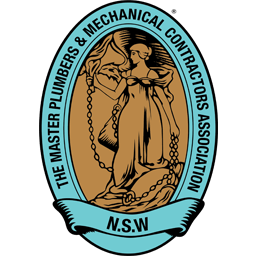A leaking washing machine tap refers to a plumbing condition where water drips or flows from the tap connected to a washing machine. This issue can stem from various causes such as worn-out washers or O-rings, or a corroded valve seat. Addressing a leaking tap promptly is crucial to prevent water wastage, reduce the risk of water damage to your home, and maintain the efficient operation of your washing machine. In this post, we’ll explore the root causes of this issue and provide practical solutions to keep your laundry routine uninterrupted.
Did you Know? The NSW Government Family & Community Services website states that a dripping tap can waste 24,000 litres of water a year. That’s a lot of water you are paying for only for it to go straight down the drain. When you consider that Sydney Water charges $2.25 per kilolitre of drinking water, this means your leaking tap could be costing you $54 a year in wasted water.
Common Causes of a Leaking Washing Machine Tap
Common causes of a leaking washing machine tap can be broadly categorised into issues with the inlet valves and the tap itself.
Faulty Inlet Valves
- Wear and Tear Over Time: Regular usage can lead to the deterioration of inlet valves, causing leaks.
- Sediment Buildup: Sediment accumulation can obstruct the valve’s function, leading to leakage.
- Loose Connections: Connections that become loose over time can result in water seepage.
Damaged Tap
- Cracks or Fractures: Physical damage to the tap, like cracks, can cause water to leak.
- Faulty Seal or Gasket: A compromised seal or gasket can fail to contain the water, leading to leaks from your tap.
- Improper Installation: Incorrectly installed taps might not seal properly, resulting in leakage.
Each of these issues requires a specific approach to diagnose and remedy, ensuring the efficient functioning of your washing machine and preventing water wastage and damage.
Identifying a Leaking Washing Machine Tap
Identifying a leaking washing machine tap involves observing various signs:
Visual Signs
- Dripping Water: Look for water dripping around the tap or faucet.
- Visible Damage: Check for any visible cracks or damage on the tap.
- Water Pooling: Notice water accumulating near the machine or on the floor.
Auditory Signs
- Continuous Dripping Sound: Listen for the sound of water continuously dripping.
- Whistling or Hissing Noises: Be aware of any unusual whistling or hissing sounds from the tap.
Flow Disruption
- Low Water Pressure: Feel if the water pressure is lower than usual.
- Inconsistent Water Flow: Observe any irregularities in the flow of water.

Steps to Fix a Leaking Washing Machine Tap
If you have identified that your washing machine tap is leaking, it’s important to take action as soon as possible to prevent further damage. Here are the steps you can follow to fix a leaking washing machine tap:
1. Shutting off the water supply
The first step is to turn off the water supply to the tap. Locate the shutoff valve near the tap and turn it clockwise until fully closed. This will stop the flow of water and prevent any further leakage. If you can’t locate the shutoff valve you can turn off your mains water supply to the house.
2. Disassembling the tap
Next, carefully disassemble the tap by removing the handle. Use a screwdriver or an appropriate tool to unscrew any screws or bolts holding the handle in place. Once the handle is removed, you will be able to access the inner components of the tap.
3. Replacing faulty components (inlet valves, faucet, gasket)
Inspect the inside of the tap and look for any faulty components. Common causes of a leaking washing machine tap include worn-out inlet valves, a faulty faucet, or a damaged gasket. If any of these components are found to be defective, they should be replaced with new ones. Spare parts for these components can be sourced from hardware stores like Bunnings or Reece Plumbing. Sometimes, you may just be able to clean away any sediment buildup to fix the issue without replacing any parts.
4. Properly tightening connections
After replacing any faulty components, ensure that all connections are properly tightened. Use a wrench or pliers to securely tighten any nuts, bolts, or screws. This will ensure a watertight seal and prevent any potential leaks.
5. Testing the tap after repair
Once you have completed the necessary repairs and tightened all connections, it’s important to test the tap to ensure it is no longer leaking. Turn on the water supply and observe the tap for any signs of leakage. If there are no leaks, you have successfully fixed the leaking washing machine tap.
Possible Risks and Damages Caused by a Leaking Washing Machine Tap
A leaking washing machine tap may seem like a minor inconvenience, but it can lead to significant risks and damages if not addressed promptly. Here are some potential issues that can arise:
Water damage to flooring, walls, and surrounding areas
When a washing machine tap leaks, water can seep into the flooring, walls, and surrounding areas. Over time, this moisture can cause structural damage, leading to costly repairs. Additionally, water damage can create an ideal environment for mould and mildew growth.
Mould and mildew growth
The moisture from a leaking tap can create a breeding ground for mould and mildew. These microorganisms not only cause unpleasant odours but can also pose health risks, especially for individuals with respiratory conditions. Mould and mildew can be difficult to eliminate once they take hold, requiring professional remediation.
Increased utility bills due to wasted water
A leaky tap wastes valuable water, resulting in unnecessarily high utility bills. Even a small drip can add up over time, depleting natural resources and driving up costs. By fixing the leak promptly, you can save on your water bill and contribute to environmental conservation.
Potential damage to the washing machine itself
If water from a leaking tap reaches the washing machine, it can cause damage to its internal components. This can result in malfunctions, reduced efficiency, and the need for expensive repairs or even replacement. Taking quick action to fix the tap can help prevent these issues and extend the lifespan of your washing machine.
Professionals Services to Contact for Repairing a Leaking Washing Machine Tap
If you’re dealing with a leaking washing machine tap and you’re unable to fix it on your own, it’s time to seek professional help. When it comes to plumbing issues, licensed plumbers are the experts you can rely on. They have the knowledge and experience to diagnose and repair any leaks in your washing machine tap. Additionally, hiring a licensed plumber from True Flow Plumbing ensures that the job is done correctly and will give you peace of mind. Give us a call today, we’d be glad to help!



